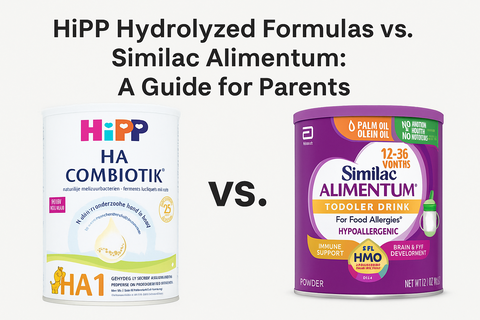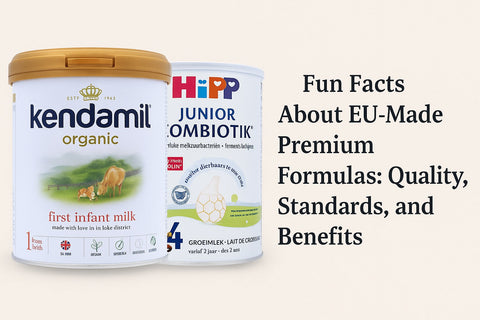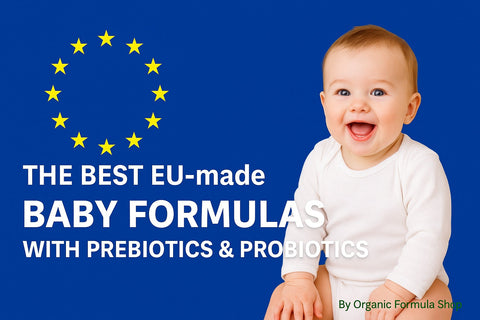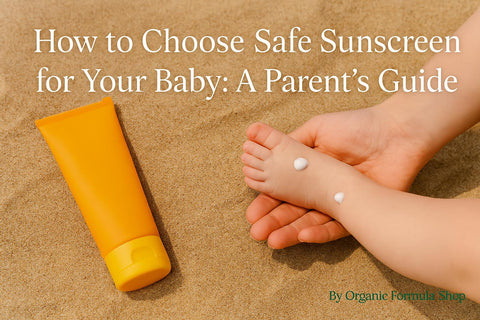How to Transition from Breast to Bottle-Feeding: A Step-by-Step Guide
Breastfeeding is a deeply rewarding experience, but at some point, you may need to transition your baby to bottle-feeding. Whether you’re returning to work, dealing with medical concerns, or simply wanting to share feeding responsibilities, making this shift requires patience and the right strategies. Understanding when and how to introduce the bottle is key to ensuring a smooth transition for you and your baby.
In this article, we’ll guide you through transitioning from breastfeeding to bottle-feeding with five practical tips and expert-backed recommendations.
Why Do Parents Transition from Breastfeeding to Bottle-Feeding?
Various personal and practical reasons often influence the decision to switch from breastfeeding to bottle-feeding. According to the CDC and AAP, exclusive breastfeeding is recommended for the first six months, but only about two-thirds of parents and you continue breastfeeding for that long. Regardless of the reason, the transition should be done gradually to help your baby adjust comfortably. While breastfeeding is considered the best, there are many different opinions regarding breastfeeding or not, but the most important things are a happy mother and a fed (happy) baby. Fed is best!

Here are some common reasons why parents and you make the transition:
- Lactation and Latching Issues: Some babies struggle to latch properly, making breastfeeding difficult and frustrating.
- Nutrition Tracking: Bottle-feeding allows parents and you to monitor their baby’s intake more accurately.
- Medical Conditions: Certain maternal medical conditions or medications can make breastfeeding unsafe.
- Work and Career Commitments: Many parents and you return to work and require a reliable feeding alternative.
- Travel and Lifestyle Factors: Some parents and you prefer the flexibility of bottle-feeding, especially when traveling.
- Specialized Feeding Needs: Some babies require specific formulas for allergies or digestive issues.
When to Introduce the Bottle to Your Breastfed Baby
Timing plays a crucial role in successfully switching from breastfeeding to bottle-feeding. Experts recommend waiting until breastfeeding is well-established, typically around 4 to 6 weeks after birth, to avoid nipple confusion and ensure a smooth transition.
Factors to Consider:
- Avoid introducing the bottle during major disruptions like teething or illness.
- Begin the transition gradually to prevent stress for you and your baby.
- If possible, start introducing the bottle a few weeks before you plan to stop breastfeeding entirely.
Weaning by Age
Weaning by 0-3 Months (Check our Stage 1 Formulas)
Weaning at this early stage can be more challenging since newborns still establish their feeding routine. If necessary, ensure a gradual transition to avoid digestive discomfort.
- Introduce small amounts of formula or bottle-fed breast milk.
- Choose a slow-flow nipple to mimic breastfeeding.
- Ensure plenty of skin-to-skin contact to maintain bonding.
Weaning by 4-6 Months (Check our Stage 1 Formulas)
Babies may be more adaptable to bottle-feeding at this stage, but patience is still key.
- Start with one bottle a day and gradually increase the frequency.
- Experiment with different bottle nipples to find what suits your baby best.
- Offer the bottle in a calm and familiar environment.
Weaning by 6-12 Months (Check our Stage 2 & Stage 3 Formulas)
Older babies may be more resistant to change but have a greater capacity to adapt.
- Offer formula or breast milk in a bottle or sippy cup.
- Provide distractions like toys or music to make bottle-feeding enjoyable.
- Encourage self-feeding to give your baby a sense of independence.
5 Essential Tips for a Gentle Transition
1. Choose the Right Bottle and Nipple
The right bottle can make a big difference in how easily your baby accepts bottle-feeding.
- Opt for slow-flow nipples to mimic breastfeeding and control milk flow.
- Choose a long, straight nipple that resembles your breast’s shape.
- Experiment with different materials like silicone or rubber to see what your baby prefers.
2. Start with Breast Milk in a Bottle
Introducing a familiar taste can help your baby accept the bottle more easily.
- Begin with expressed breast milk in the bottle before switching to formula.
- Freeze extra breast milk for gradual bottle introduction.
- Warm the milk to body temperature (98.6°F) to make it more familiar.
3. Use the Paced Bottle-Feeding Method
Paced bottle-feeding mimics breastfeeding by allowing your baby to control the milk flow.
- Hold your baby upright and keep the bottle horizontal.
- Allow your baby to latch deeply, just like breastfeeding.
- Offer breaks to pause and assess hunger or fullness cues.
4. Offer the Bottle at the Right Time
Timing is essential when introducing a bottle for the first time.
- Try offering the bottle when your baby is calm but slightly hungry.
- Have another caregiver introduce the bottle, as your baby may associate you with breastfeeding.
- Change the feeding environment to avoid breastfeeding cues.
5. Transition Gradually and Stay Patient
Switching from breast to bottle should be done over several weeks to ease the process.
- Replace one breastfeeding session with a bottle every few days.
- Gradually increase the number of bottle feedings while decreasing nursing sessions.
- Continue offering comfort and skin-to-skin contact to maintain bonding.
Best Breast Milk Alternatives: Choosing the Right Formula
If you are replacing breastfeeding with formula, selecting a high-quality formula is crucial. Hence many US parents opt for European-made Organic Formulas which are as close to breast milk as possible.
Why European Organic Formula is Superior
European baby formulas, including HiPP, Kendamil, Holle, and Lebenswert, adhere to stricter regulations than their U.S. counterparts. They are free from artificial additives, synthetic preservatives, and unnecessary sweeteners like corn syrup. European Organic Formula also contains premium organic ingredients, ensuring high nutritional value and digestibility. You can find all these top-quality products at Organic Formula Shop!
Recommended European Baby Formulas
-
HiPP Dutch Stage 1 & Stage 2: Contains prebiotics and probiotics to support gut health.

-
Kendamil Classic Stage 1 & Stage 2: Made with whole milk and contains natural DHA.

-
Holle Cow Milk Formula Stage 1: Organic, Demeter-certified, and gentle on digestion.

-
Lebenswert Formula Stage 1: Free from artificial additives, made with high-quality organic milk.

-
Goat Milk Formula Options: Easier to digest for babies with cow’s milk sensitivity.
- HypoAllergenic Baby Formula: For parents of babies with dietary restrictions, hypoallergenic baby formulas could be a lifesaver.
- Formulas for Sensitive Tummies: Organic Formula Shop carries a range of specialty formulas developed to help ease some of the most common feeding and digestive issues.
For the best selection of European Organic Formula, visit Organic Formula Shop, where parents and you can find a variety of premium formulas that meet their baby’s nutritional needs.
Conclusion
Transitioning from breastfeeding to bottle-feeding is a significant change, but with the right approach, it can be a smooth and stress-free experience. The key is gradual introduction, patience, and choosing the right feeding method for your baby.
Remember, every baby is different. Some adapt quickly, while others need more time. Stay flexible, observe your baby’s cues, and celebrate small milestones along the way. Whether you choose to continue breastfeeding alongside bottle-feeding or fully switch to formula, what matters most is that your baby is happy, healthy, and well-nourished.
For more guidance on baby nutrition and feeding options, explore our selection of European Organic Formulas at Organic Formula Shop to support your little one’s growth and development.
Contact
Contact our dedicated customer support team for expert advice and guidance tailored to your baby's needs. They have earned hundreds of 5-star reviews from our customers, helping you to provide the best nutrition for your little one. Contact us here or shoot us an email at support@organicformulashop.com.
We're here to help!
Disclaimer: This article is for informational purposes only and should not replace professional medical advice. Always consult a pediatrician before making any changes to your baby's diet.




